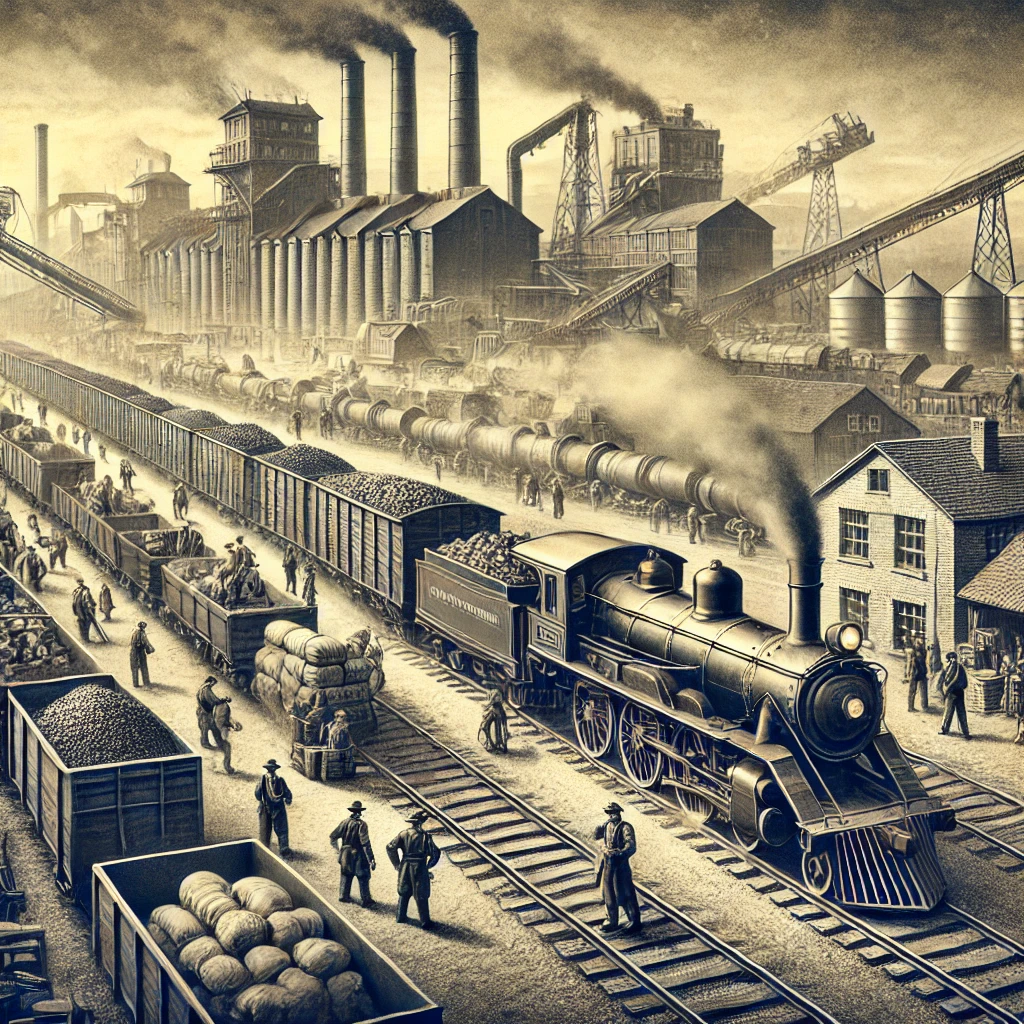The steam locomotive that launched in the 19th century was a novelty in transportation as it lowered the cost and time taken for moving raw materials and finished goods to an unprecedented level. Before steam-powered trains, transportation was dependent on horse-pulled carts, canals, and basic road systems, all of which were time-consuming, pricey, and ineffective. Steam locomotives set themselves apart with a new approach, making it easier for industries to enhance their reach into new markets and also improve their distribution channels. This article aims to analyze how locomotives achieved lower costs of transporting raw and finished goods and what their impact was on global trade and industrialization.
How Effective are Steam Locomotives in Transportation?
Steam locomotives marked a big turning point in the history of transportation. The ability to move cargo in greater volumes, faster, and at increased dependability marked a drastic improvement. In comparison with traditional methods, steam-powered locomotives could now carry astounding amounts of cargo over vast distances at incredibly affordable prices.
Faster Over Longer Distances
In comparison with wagons and canals, the steam locomotive-powered ship is a self-propelled ship that transports goods over land without the need for horses, which vastly increased labor. Not only does the vessel complete the foreseen trip, but so much time is saved, that if the distance is reasonable, weeks and even days are saved, depending upon the distance and load.
Lower Unit Costs of Transportation on Land
Steam locomotives reduced the cost per unit of transportation dramatically. The increased volumetric capacity addition meant that trains could move goods more freely in a single trip, thus minimizing labor and fuel expenditure. This deduction made the monetization of coal, steel, and agricultural products much wider accessible market-wise.
Improved Reliability and Functioning in All Seasons
In contrast to canals or northern parts of the country where trains would mostly freeze in the winter, railways made year-round travel a reality. This ability to use the railways made it easier for manufacturers to plan their production schedules resulting in very diminished supply chain costs.
Economic Impacts of the Raw Materials and the Final Products
The Emergence of New Integrated Industrial Regions
The expansion of rail networks assisted regions that needed faster and more economical transport of raw materials. Coal mines, steel mills, and textile factories began obtaining their raw inputs with much more and cheaper efficiency resulting in an explosion of industrial output.
Extend Reach on The Sale of the Finished Products
Through rail, finished goods became possible to move over wider geographic areas than just local markets. With more goods came more competition, which meant the availability of these goods on easier terms, lowering the regional economic boundaries.
Lowering the Price of Consumer Products
Steam locomotives lowered consumer goods prices by lowering transportation costs. Widespread production was possible because raw materials were moved efficiently, which gave rise to economies of scale that lowered retail prices.
Comparing Steam Locomotives with Predecessor Transport Methods
| Feature | Steam Locomotives | Horse-Drawn Carts | Canals |
| Speed | High | Low | Moderate |
| Capacity | Large | Small | Medium |
| Reliability | High (all-weather) | Low | Affected by seasons |
| Cost Efficiency | High | Low | Moderate |
The Use of Rail Roads In the Expansion
Steam locomotives not only helped industries at the local level but had great effects on international trade as well. As goods began to be moved using railways, it became possible to transport goods throughout entire continents, increasing global trade.
Broadening of Export Markets: countries with developed rail systems could sell raw materials along with other manufactured goods at a very low price.
Improved Supply Chain Logistics: the availability of railways allowed industries to place manufacturing facilities closer to population centers and distribute products without delays.
Urbanization and Infrastructure Development: Cities around important railroads grew quickly due to an increase in trade and industry activities.
FAQs
In what ways did steam locomotives improve supply chain management?
Steam locomotives improved supply chains by facilitating the timely delivery of raw materials and goods, which minimized storage expenses and delays associated with production.
Which industries profited most from transportation by steam locomotives?
Coal mining and the production of steel textiles and agriculture reaped the most rewards because these industries were able to transport their products more quickly and at lower prices.
Was there a drop in employment in traditional forms of transport when steam locomotives came into use?
While railways did cause the loss of some jobs in the canal and cart-based transportation systems, new job openings in railway construction, engineering, and logistics fully compensated for the loss of jobs.
What was the impact of railroads on the urbanization process?
Railways provided easier access to industrial centers which resulted in increased population growth within cities and the expansion of urban areas along with commercial activities.
Is freight steaming still used in some parts of the world today?
Modern railroads replaced steam locomotives with diesel and electric trains for freight transport. However, steam engines are still used as a tourist attraction or in heritage railways.
Conclusion
The introduction of steam locomotives transformed the transportation sector by cutting down the costs associated with moving materials and goods. Their efficiency in speed, capacity, and reliability greatly boosted industrial development and transformed economies along with global trade. The effect of steam-powered rail transport greatly contributed to the evolution of modern logistics; enabling the world to understand how innovations in transport serve as critical catalysts for economic development. Knowing how steam locomotives reduced the expenses in the transportation of raw materials and finished goods reveals the importance of steam locomotives in the industrialization of the world.
